Executive summary
CompHealth surveyed more than 480 physical therapists, occupational therapists, speech language pathologists, pharmacists, and lab technicians to find out their feelings about the COVID-19 pandemic and how it was affecting their lives. Twenty-four percent reported being laid-off or furloughed and most of those are filing for unemployment.Work has dropped
Those not laid off or furloughed are still finding themselves with less work. Seventy-five percent reported working less now than before the pandemic. The reason for less work is lack of patient volume (42%) and their facilities closing elective care (29%).Impacted by COVID-19 but not COVID-19 patients
This group of providers have relatively little exposure to COVID-19 patients with just 40% having treated COVID-19 patients or those with symptoms. However, general anxiety levels remain high (76%) and concern with becoming infected (87%) or infecting their families (84%) also is high.It’s time to get back to work
Physical therapists, occupational therapists, speech language pathologists, pharmacists, and lab technicians are eager to return to work with 75% wanting to resume elective care in the next month. In addition, 67% want stay-at-home restrictions to be lifted in the next month. When asked about the response to the pandemic, 67% of the group rates the response of healthcare workers as “very good” or “excellent”. The feelings were split about their healthcare organizations (39% rating them “poor” or “fair” and 34% rating them “very good” or excellent”) and their state (36% rating them “poor” or “fair” and 37% rating them “very good” or excellent”). The response gets worse for state the U.S. legislature (70% “poor” or “fair”), or the White House (61% “poor” or “fair”).Survey report
Out of work
Allied healthcare providers (therapists, pharmacists, lab technicians) were more heavily affected by layoffs and furloughs than any other healthcare providers with 24% reporting being out of work compared to just 13% of physicians and 14% of nurses.Employment status
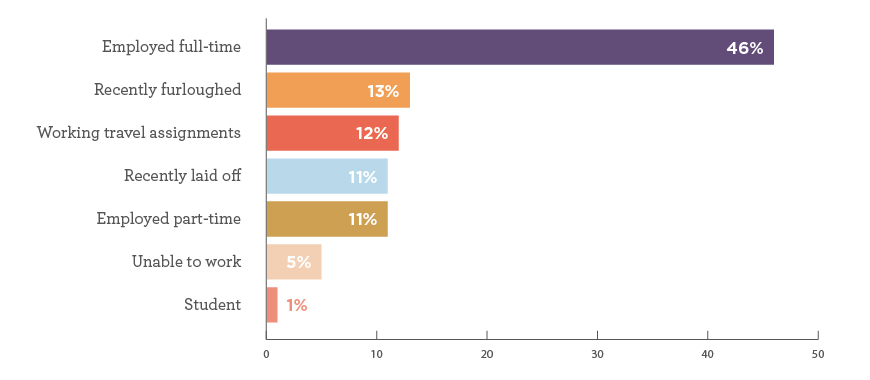 Most out of work providers are filing for unemployment (72%), reducing expenses (51%), relying on savings (44%), or applying for new positions (33%).
Most out of work providers are filing for unemployment (72%), reducing expenses (51%), relying on savings (44%), or applying for new positions (33%).
Plans to maintain income
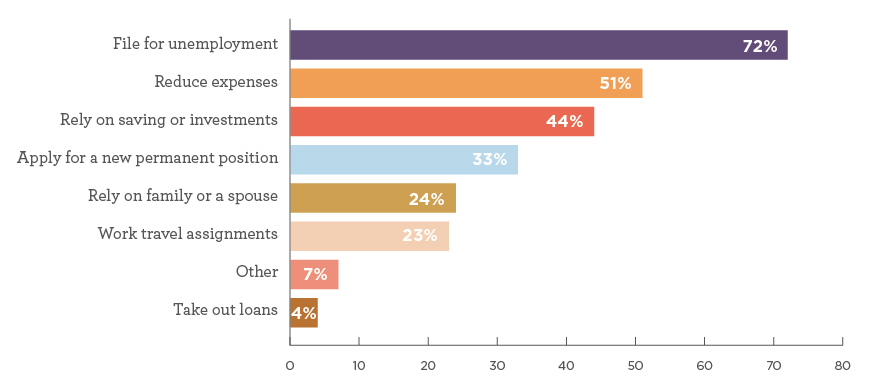 For those still working most are working less than they were before COVID-19 (75%) while just 13% are working more. The primary reason for the decreases in work is seeing lower patient volumes (42%) and the pause in elective care (29%).
For those still working most are working less than they were before COVID-19 (75%) while just 13% are working more. The primary reason for the decreases in work is seeing lower patient volumes (42%) and the pause in elective care (29%).
Workload
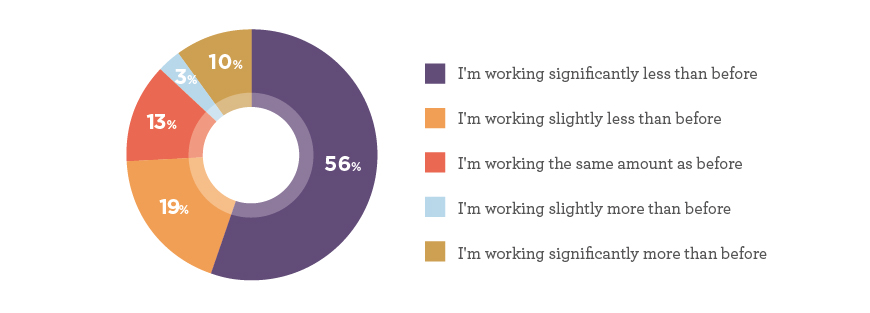
Reason for decreased workload
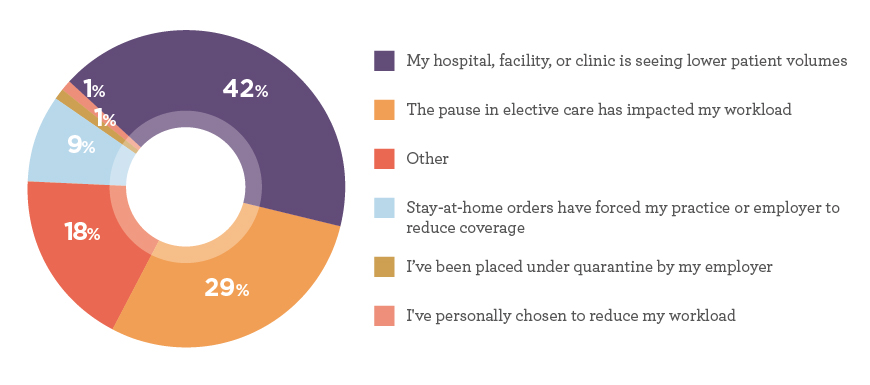
Anxiety levels are high
While only 40% of allied providers had treated COVID-19 patients or those with symptoms they still had extremely high levels of anxiety (76%) due to the pandemic. By comparison, 73% or nurses and 59% of physicians reported treating COVID-19 patients. While general anxiety was high, concern over being infected by COVID-19 was lower with 62% being slightly or moderately concerned with contracting the virus. However, 40% were concerned with passing the virus onto their family members.Treating COVID-19 patients or those with COVID-19 symptoms

Overall anxiety level due to the COVID-19 pandemic
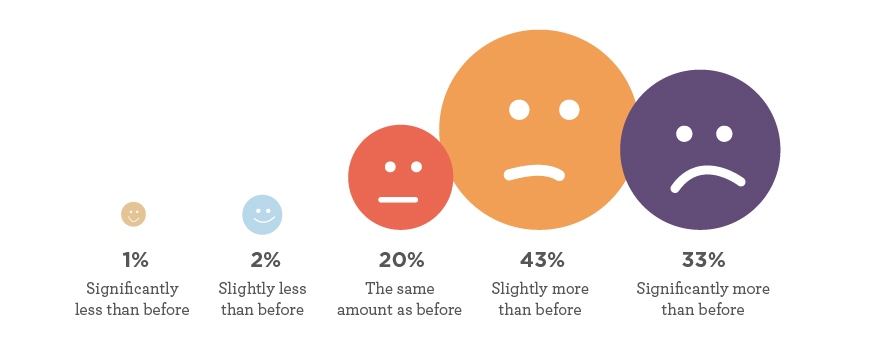 Concern with becoming infected with COVID-19
Concern with becoming infected with COVID-19
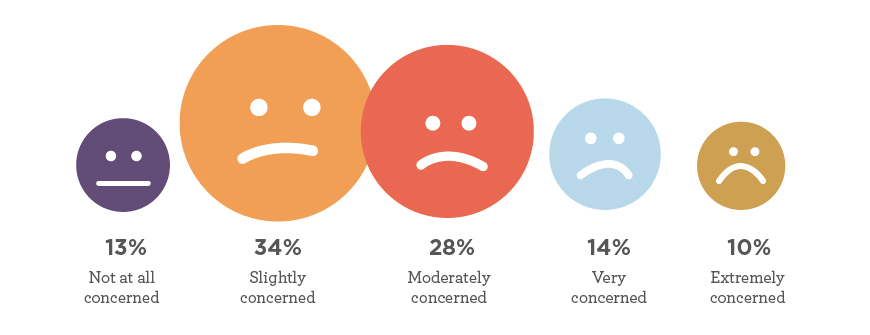
Concern with infecting family members with COVID-19
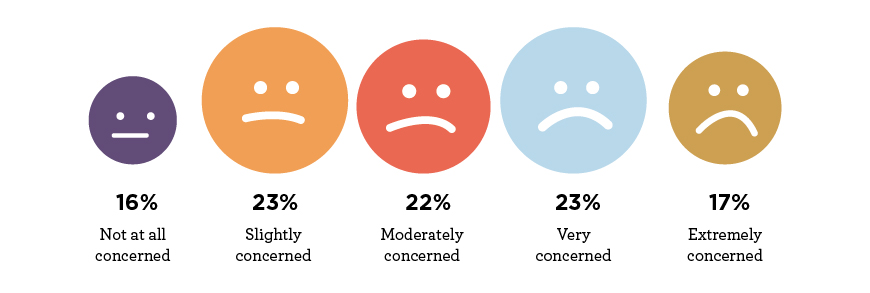
Public health response
Allied providers are ready to get back to work with 75% wanting elective procedures to open up in the next month and 21% wanting it open in the next few months. They are also ready for stay-at-home restrictions to be lifted with 67% wanting it to happen in the next month and 28% in the next few months.Timeline for resuming elective care

Timeline for lifting stay-at-home restrictions
 When asked to rate the response to COVID-19 by their fellow healthcare workers 67% of providers felt they had done “very good” or “excellent”. They were split in their feelings about their own hospital or health system (34% positive versus 39% negative) and their state government (37% positive versus 36% negative). The U.S. Legislature and the White House received overall negative reviews (70% and 61% respectively).
When asked to rate the response to COVID-19 by their fellow healthcare workers 67% of providers felt they had done “very good” or “excellent”. They were split in their feelings about their own hospital or health system (34% positive versus 39% negative) and their state government (37% positive versus 36% negative). The U.S. Legislature and the White House received overall negative reviews (70% and 61% respectively).
 Blog
Blog
